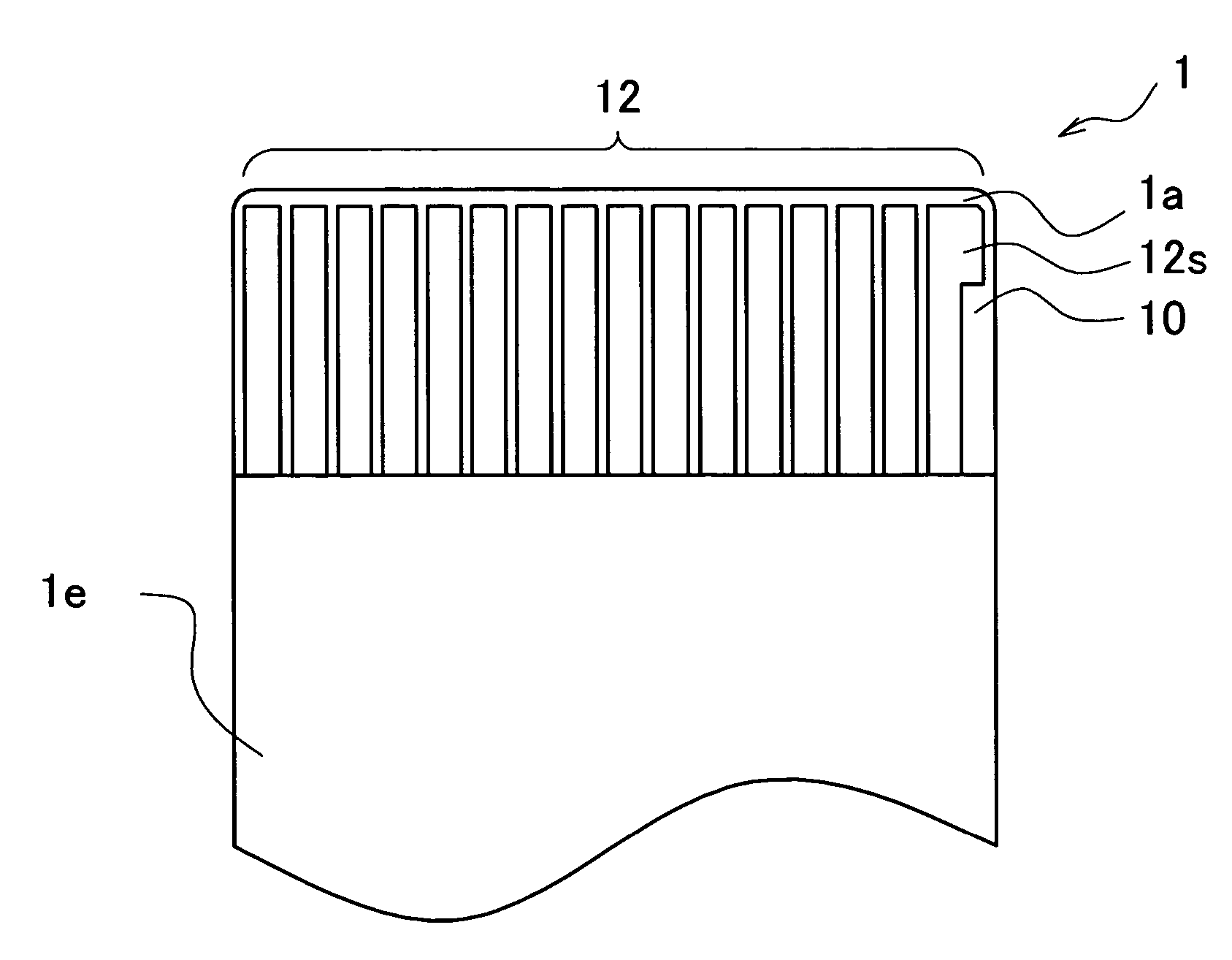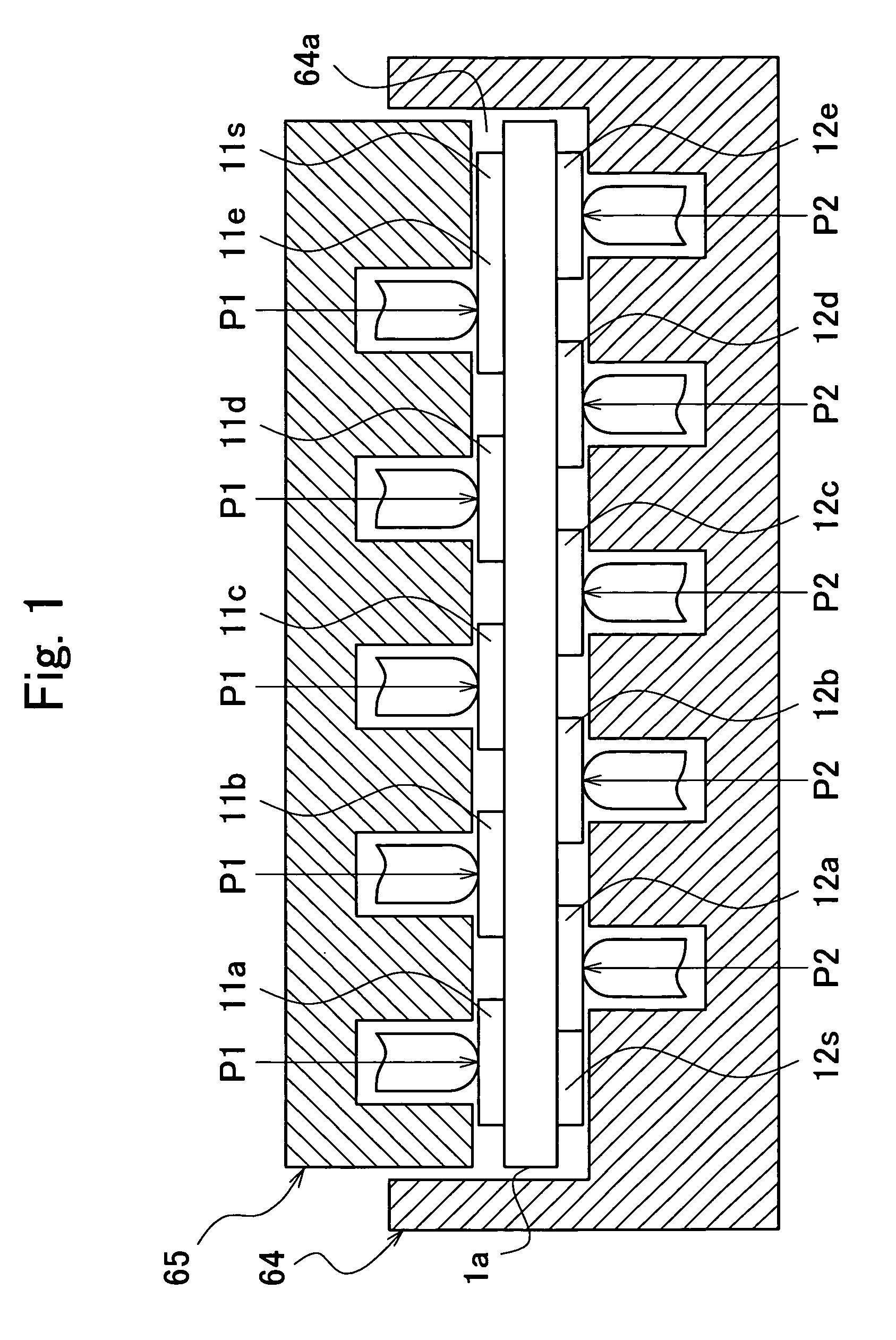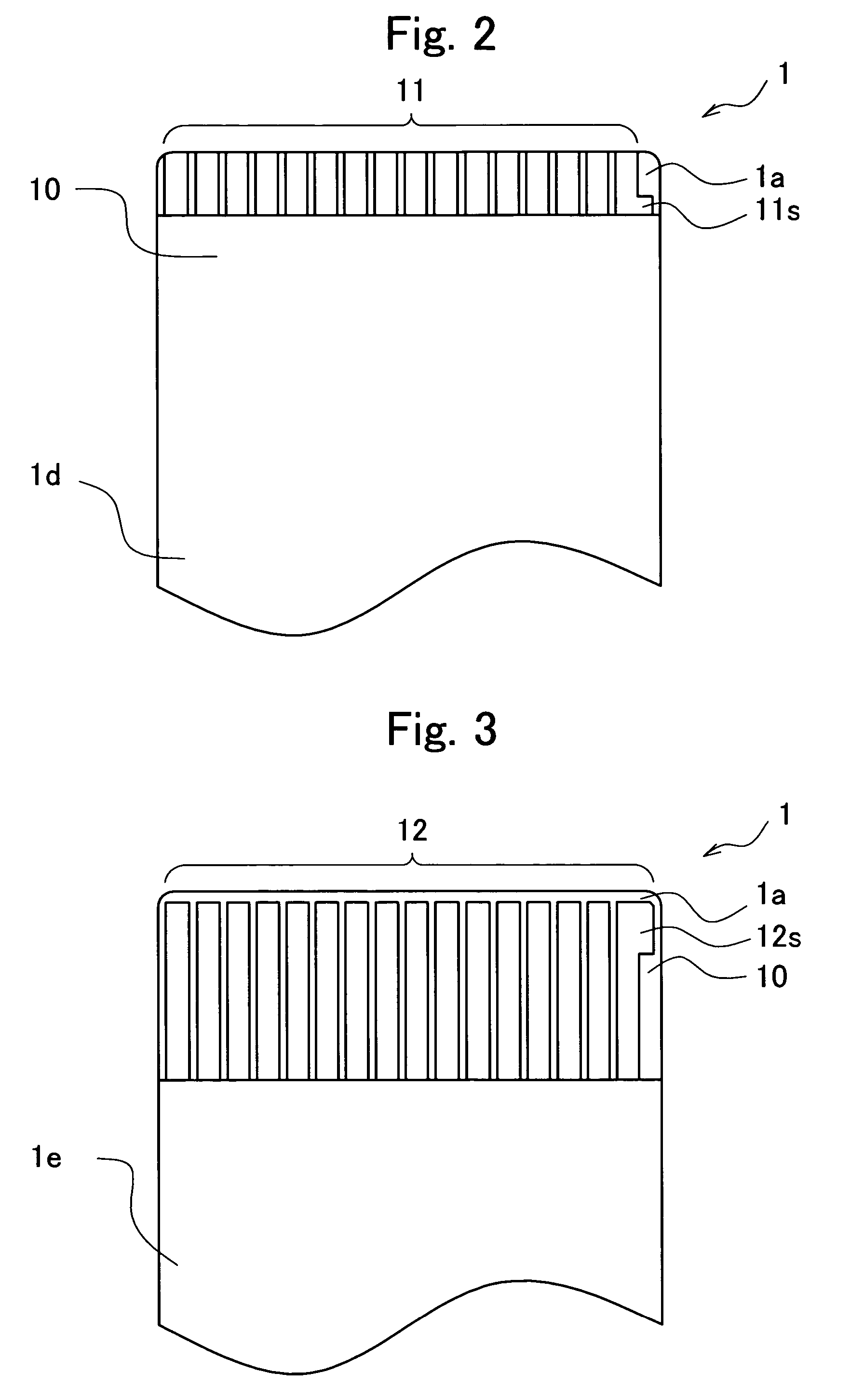Double-sided flexible printed circuits
a printed circuit and flexible technology, applied in the direction of flat/ribbon cables, insulated conductors, cables, etc., can solve the problem of contact pressure of contacts differing with the position of pads
- Summary
- Abstract
- Description
- Claims
- Application Information
AI Technical Summary
Benefits of technology
Problems solved by technology
Method used
Image
Examples
Embodiment Construction
[0054]A best mode for implementing the present invention is explained below, referring to the drawings.
[0055]FIG. 1 is a top view of an embodiment of the double-sided FPC according to the present invention. FIG. 2 is a plan view of Embodiment 1 of the double-sided FPC according to the present invention and of one face (front face) of the FPC. FIG. 3 is a plan view of the double-sided FPC according to Embodiment 1, and is a view of the other face (rear face) of the FPC. FIG. 4 is plan view of Embodiment 2 of the double-sided FPC according to the present invention. FIG. 4 is a view of one face (front face) of the FPC. FIG. 5 is a plan view of the double-sided FPC according to Embodiment 2, and is a view of the other face (rear face) of the FPC. FIGS. 6A and 6B are enlarged views of main parts of the double-sided FPC according to Embodiment 2. FIG. 6A is an enlarged view of a first conductive pattern at an end, and FIG. 6B is an enlarged view of a second conductive pattern at an end. F...
PUM
 Login to View More
Login to View More Abstract
Description
Claims
Application Information
 Login to View More
Login to View More - R&D
- Intellectual Property
- Life Sciences
- Materials
- Tech Scout
- Unparalleled Data Quality
- Higher Quality Content
- 60% Fewer Hallucinations
Browse by: Latest US Patents, China's latest patents, Technical Efficacy Thesaurus, Application Domain, Technology Topic, Popular Technical Reports.
© 2025 PatSnap. All rights reserved.Legal|Privacy policy|Modern Slavery Act Transparency Statement|Sitemap|About US| Contact US: help@patsnap.com



